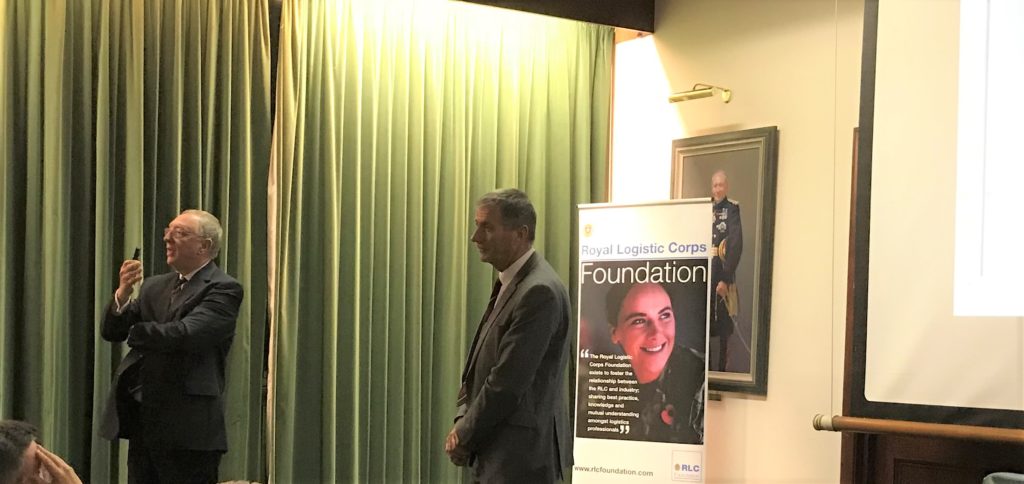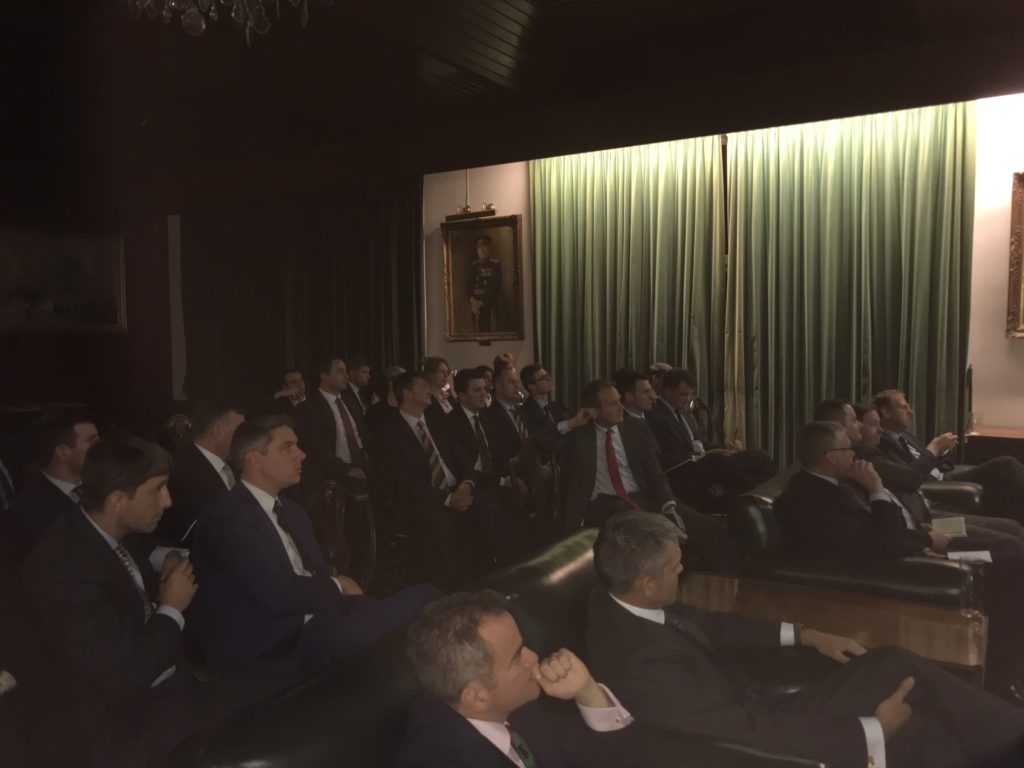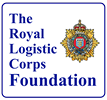RLC Foundation Autumn Lecture/Presentation 2017
Innovation: It is not just about ideas. It is a ‘people’ challenge.
With its traditional culture can the military embrace this challenge and be effective at innovation.
1. Introduction and Context
A focus on innovation is, of course, nothing new. Remember the dot com boom of a decade or so ago? Not to mention many other periods in the past characterised by rapid change. Change that in the end altered the way we do things, the products we rely on and the services that have helped alter the way we live
However there is something different about the current context and the manner in which a need for innovation seems to be everywhere. This current context is affecting all organisations from the smart young businesses of Shoreditch in London to established, large organisations. And of course the military.
It is what Klaus Schwab – the founder and chairman of The World Economic Forum – has termed The Fourth Industrial Revolution. A veritable tipping point for how we organise and do things and a pace of change that is increasingly unavoidable. This is driven by a technology revolution which, as he says, ‘entails nothing less than a transformation of humankind’! Profound stuff. He goes on …’We are at the beginning of a revolution that is fundamentally changing the way we live, work and relate to one another….[it has the potential to be] unlike anything humankind has experienced before…a fusion of technologies across the physical, digital, and biological worlds’. All developing and self- reinforcing at pace!
Others take the same view. Read ‘The Rise of The Robots’ by Martin Ford for an assessment of technical innovation underway and accelerating, or the latest Economist title, ‘Mega Tech’ looking out over the next 10 and 20 years and advising that the rapid change we face ahead will not be easy to cope with.
Read pretty much any one of the increasing number of books on the subject (Amazon 16000 plus) and the message is the same.
So if this is the context driving a current focus on innovation everywhere it might be useful to define in a more structured sense what we might mean by it.
2. Invention and Innovation
The past can often be a relevant guide to the future. Consider 1967, itself an amazing year for innovation. First up The Beatles released Sgt. Pepper. After that nothing in the world of ‘pop’ records was the same again. Their innovation wasn’t just the songs it was the way they used a recording studio and even the packaging of the record. Music is a constant example of innovation. Same idea but mostly something new! Then that same year Concorde was introduced to the world and at roughly the same time so too was the Boeing 747 Jumbo jet. Concorde represented a new INVENTION, it broke technical barriers and achieved something not done before or, amazingly, since. The 747 was an INNOVATION. An evolution of a current technology but that went on to change our capabilities for air travel. It changed the world. Concorde did not.
Pursuing invention is inherently more risky. Whilst there can be considerable overlap between innovation and a fresh invention it is RISK (particularly market or more generally commercial) that separates them. One needs to fully explore which characteristic is dominant and understand the potential risk. As Concorde represents not even the most brilliant invention will succeed commercially and therefore will not be sustainable. The job of the top of any organisation (Chairman/CEO/Board) is to ensure the sustainability of the organisation as its markets and objectives constantly change and evolve.
3. What kind of Innovation
Innovation can take place in at least three distinct ways. We see all of these currently and they are relevant for all organisations.
Type A is about ways of working.
Since the financial crash of 2007/8 the world of work has changed. Teams are busier, less organised working time and where, as reported in many surveys, there is insufficient time available to handle the workload. It affects us all. Can we find new ways of doing things to be more efficient and deliver on the challenge ‘of doing more with less’! Absolutely a people issue for all organisations. It is a proxy for removing cost. It is unavoidable.
Type B is about Product/Service Development.
A direct result of new technology creating new opportunities. The smart phone is the classic example but so too is on line shopping and access through Apps to a bewildering and increasing array of services. Amazing to think that the iPhone was launched in only 2007! Not an invention but a truly transformative innovation.
Type C is about Disruptive Change.
This applies at the level of the organisation. Once secure businesses now find themselves struggling with sustainability. So many examples come to mind from low cost airlines driving out of business traditional carriers to the Ubers and Airbnb style new businesses. Not to mention electric vehicles challenging the dominant car manufacturers. Read Brad Stone’s book ‘The Upstarts’ about how Uber, Airbnb and what he calls the killer companies of the new Silicon Valley are changing the World!
As with Invention and Innovation there is obvious overlap between these categories. One will dominate but it is just a useful starting point to think about what type of change an organisation is having to deal with and what the people requirements are for each type.
4. Leadership
As with every previous revolution success is delivered above all by having the right people in tune and motivated by what is required. It is about the way the top of the organisation sets not just the objectives but how it conveys the required behaviour and tone for the organisation. Is it rooted to its past culture, because it actually behaves like that or is change and a fresh (but considered) approach evident and in its DNA? As with the world of technology Hardware provides a capability but it is the Software (people) that brings it to life and makes it happen.
So what might the people success criteria be?
5. 5 Steps to Successful Innovation
As already described Innovation is about more than technology, products and services. It embraces methodology, processes and communications. It is the successful exploitation of new ideas and requires something of a leap of faith…increasingly so given the pace of change. Such ‘leaps’ also require management. So based on direct experience what are the steps?
Leadership
Above all the master key to successful change. Such leadership is not just from the top of the organisation but empowerment at all levels. Innovators are not necessarily themselves the best leaders. The right talent needs to be used. Leadership must create and reinforce through its behaviour the right culture. It is something to manage and not be left to just emerge.
Culture
It must be ok to fail and similarly there should be celebration for success along with appropriate and regular recognition and if appropriate reward. Objectives should be shared and embraced through teamwork. All obvious stuff and easy to say but always difficult to make work in practice. Innovation requires a focus on the end requirements be they customers or other end users. And the team needs to be empowered to operate at pace (so no overbearing or dominant bureaucracy) and be agile with an ability to respond and alter it approach depending on circumstances. It will be slowed and potentially ineffective by a constant need for reapproval.
Collaboration
A fundamental requirement perhaps. Create informal time to share ideas….’Great discoveries and improvements invariably involve the co-operation of many minds’… (Alexander Graham Bell)
There is a need for clarity around individual’s objectives and how these will contribute to a shared common goal. Time must be spent on getting real clarity and alignment with the overriding objective.
Market Focus
Beware of inventions because you can or they seem like a good idea. What does the market require? How can we satisfy that need? There is a requirement to constantly test and challenge on the basis of these questions. It was assumed in Concorde’s case that passengers wanted to get everywhere faster? There was no effective market testing beyond the notion of ‘in principle’. This requirement was not matched against the alternative of paying less and less for travel. The opportunity cost of speed through ticket prices and environmental cost was, as it turned out, far too high. Cheaper and cheaper but a few hours longer from A to B was the real market focus.
In any situation a thorough understanding of the market supported by empirical evidence is fundamental. Has your organisation done the research?
Process
Process alone can’t drive innovation but process is the servant of an innovation culture.
Does your organisation have a structured process to review, evaluate and choose appropriate projects? Do you have a proper pipeline to assess a flow of innovation projects and subject them to timed gateway reviews so that resources are not spread too thinly and the most promising are prioritised. This is similar to a sales pipeline process. Does your organisation have these skills?
Does your proposal work? Where has the evidence come from? Is the technology actually ready or is it still in an early phase. Who is driving this process? What measurement process is in place to monitor progress and make adjustments if required?
Is the required level of investment available and will returns meet target level criteria?
These five criteria define a solid management approach to getting results. They put a shape and above all process around shaping innovation ideas to the overall objective of the organisation. They must be underpinned by an empowerment of talent to have the freedom to behave in a way that is likely to liberate new ways of doing things (Innovation type A) and be able to get on with it as well as develop new products and services. It does not mean an absence of management but rather an appropriate style to keep control, develop a focus on the most promising ideas and help turn such ideas, from wherever they arise, into results. Innovation is part of the culture in the most successful organisations it is not a department or job title.
6. Conclusion
We will now live with some unavoidable challenges brought about by profound changes in capabilities. We need to do more with less. We need to be more agile and empowering as organisations. We need to resource and finance potential winners properly. We need to be good at timing. The right idea at the wrong time won’t necessarily succeed. We need to trust our selected talent.
And finally an unexpected stroke of luck might help!
(Tip: You might practice being lucky by reading around this subject to stimulate new ideas and get a feel for where things are heading and the pace they are doing so)
Col Richard Hunt and Col Guy Hammersley
The Staff Corps RE(V)


